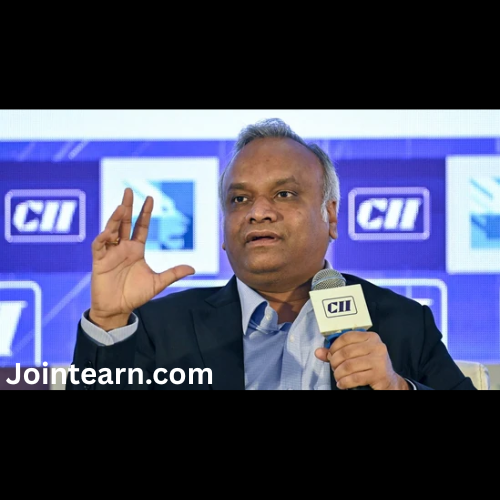External affairs minister S. Jaishankar’s upcoming trip to Canada on November 12 signals a tangible shift in the long-strained relationship between New Delhi and Ottawa. The visit, announced by India’s external affairs ministry, will see Jaishankar participate in the G7 foreign ministers’ meeting in Ontario, where he will join an outreach session for partner countries at the invitation of Canadian foreign minister Anita Anand. Although framed as a multilateral engagement, the visit unmistakably reflects a broader diplomatic recalibration between the two countries following a prolonged period of tension.
The invitation itself carries symbolic weight. India is not a member of the G7, but its inclusion as a partner country highlights its growing strategic relevance to global governance and major-power groupings. The ministry underscored that Jaishankar’s participation demonstrates India’s continuing commitment to addressing global challenges in cooperation with international partners, while simultaneously reinforcing the voice of the Global South in international forums. At a time when pressing geopolitical issues demand coordinated action—from economic instability to global security flashpoints—India’s presence at the table reflects its increasing diplomatic centrality.
Beyond the multilateral setting, Jaishankar is expected to conduct a series of bilateral meetings on the sidelines of the G7 gathering. These interactions, particularly with Anand, are likely to be closely watched, as they represent another step toward normalising relations that deteriorated sharply after June 2023. That month, former Canadian prime minister Justin Trudeau publicly accused Indian government agents of involvement in the killing of Khalistani separatist Hardeep Singh Nijjar, who was shot dead outside a Sikh temple in British Columbia. India rejected the accusation as baseless and politically motivated, but the fallout was swift and significant. Diplomatic expulsions, public statements, and heightened tensions defined bilateral ties for months, stalling cooperation across multiple domains including trade negotiations and consular engagement.
The two sides have started to slowly repair the breach. One of the clearest indicators of this shift came just two months ago, when both governments appointed new high commissioners to each other’s capitals. This reciprocal move suggested an institutional willingness to stabilise the relationship and reestablish regular diplomatic channels. Jaishankar’s Canada visit builds directly on that momentum.
The personal engagement between the foreign ministers has also been notable. Jaishankar and Anand have met twice in the past two months. Their first interaction occurred on the margins of the UN General Assembly in New York in September. Soon after, Anand travelled to New Delhi, where the two leaders held further discussions aimed at rebuilding trust. These meetings resulted in the unveiling of a structured roadmap for resetting ties, including agreements to resume trade and investment discussions that had been suspended amid the diplomatic row. Reviving these economic conversations marks a key area of mutual interest. Canada remains a significant trade partner for India, and bilateral economic cooperation had been on an upward trajectory until the dispute halted negotiations on the Comprehensive Economic Partnership Agreement (CEPA). The decision to reopen dialogue indicates that both countries are now prioritising pragmatic engagement over political differences.
The multilateral context of Jaishankar’s visit further contributes to the thaw. The G7 foreign ministers’ meeting is set to focus on global economic pressures, geopolitical instability, and security challenges. Canada’s foreign ministry emphasised these priorities when announcing the agenda last week. For India, participation in discussions on global governance aligns with its broader foreign-policy approach, which increasingly emphasises strategic autonomy combined with flexible partnerships across geopolitical blocs. For Canada, inviting India to the outreach session reinforces the G7’s recognition that global challenges require inputs from major non-member economies.
This year’s outreach list underscores the breadth of countries considered critical partners for the G7. Along with India, the group includes Australia, Brazil, Saudi Arabia, Mexico, South Korea, South Africa, and Ukraine. Their participation reflects an attempt by the G7 to expand its consultative framework beyond traditional Western allies and include influential voices from emerging and regional powers. India’s role among these countries has grown more pronounced as it positions itself as a representative of the Global South. Its development-focused diplomacy, climate-related initiatives, and engagement with financial reform debates have given it credibility among developing countries and strategic value for Western partners seeking broader legitimacy.
The Canada visit therefore serves several overlapping objectives. Diplomatically, it offers India a platform to advance its views on global issues ranging from economic governance to security challenges. For Canada, hosting India underscores its interest in deepening ties with a key Indo-Pacific partner, even amid lingering concerns over diaspora politics and national security. Strategically, both countries stand to benefit from de-escalating tensions. For India, stable ties with Canada are essential for its diaspora-related outreach and sustained economic negotiations. For Canada, maintaining constructive relations with India is important not only for trade but also for its broader Indo-Pacific strategy, which seeks to diversify partnerships and reduce reliance on China.
The Nijjar controversy will remain an unresolved backdrop for some time, but recent steps suggest that both sides are seeking ways to compartmentalise the issue. The decision to restore high-level diplomatic engagement and resume suspended processes indicates a shared recognition that prolonged hostility harms both parties more than it benefits them. Jaishankar’s meeting with Anand during the G7 visit would mark their third formal interaction in two months, an unusually rapid pace for ministers navigating a sensitive diplomatic recovery. These engagements lay the groundwork for rebuilding functional cooperation and creating diplomatic space to address contentious matters with less public confrontation.
As India continues to strengthen its global presence, its participation in forums like the G7 highlights its transition from a regional actor to a pivotal global stakeholder. Canada’s willingness to invite and engage with India despite recent tensions reflects the geopolitical necessity of keeping major emerging powers integrated into international discussions. Jaishankar’s visit therefore stands at the intersection of diplomatic rehabilitation and global strategic alignment.
In the coming months, observers will watch for concrete follow-through on the restored trade talks and for further signs of institutional cooperation between the two governments. While the mistrust generated by the Nijjar allegations cannot be erased quickly, diplomatic momentum is clearly shifting toward normalisation. Jaishankar’s G7 engagement in Canada represents a significant step in that direction, offering both countries an opportunity to turn a contentious chapter into a more stable and pragmatic phase of bilateral relations.


Leave a Reply